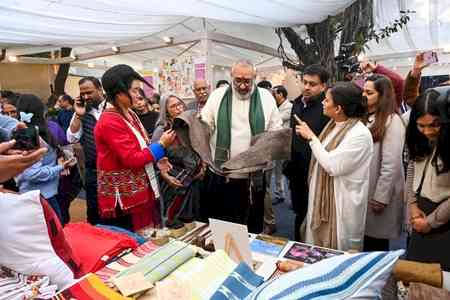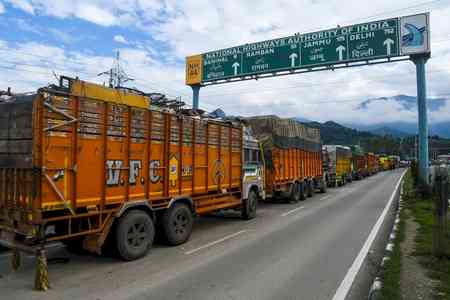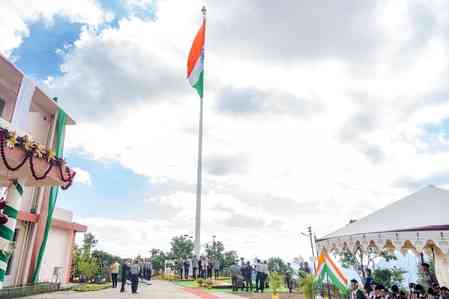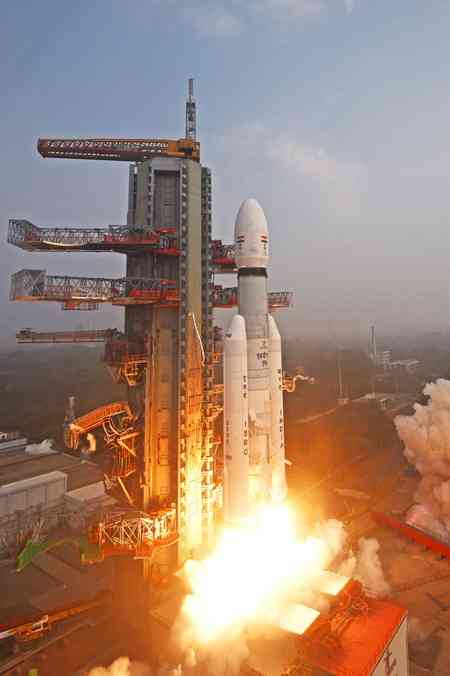Role of Interest Equalisation Scheme in making exports competitive by removing disability, facilitating exports and economy
With the rising inflation and logistics challenges, leading to substantial increase in sea & air freight, the requirement of export credit has gone up. Simultaneously, the slow off take of inventories with lesser purchasing power, owing to high inflation, has led to liquidity challenges for the buyers also resulting in demand of credit for longer duration. Buyers, who use to pay between 30-60 days are now asking for credit between 120-150 days or even longer. With increased credit demand for longer duration, the cost of credit has become all the more relevant.

By Ashwani Kumar, President, FIEO
With the rising inflation and logistics challenges, leading to substantial increase in sea & air freight, the requirement of export credit has gone up. Simultaneously, the slow off take of inventories with lesser purchasing power, owing to high inflation, has led to liquidity challenges for the buyers also resulting in demand of credit for longer duration. Buyers, who use to pay between 30-60 days are now asking for credit between 120-150 days or even longer. With increased credit demand for longer duration, the cost of credit has become all the more relevant.
This has brought focus on the Interest Equalisation Scheme which currently is only available upto 31st Dec, 2024 and that too to manufacturers in MSME with an annual cap of Rs 50 lakh per IEC holder, which is insufficient for many MSMEs.
A long term IES will help the exporters to quickly conclude orders offering the most competitive rates to push our exports. This is all the more relevant for orders in which the profit margins are wafer thin and availability of interest subvention of 3% may help the exporters to clinch or lose the order.
While the subvention provided by the IES is making exports competitive, in few cases, it may be adding to the profitability of exporters who have better profit margins due to value addition, branding etc. Since, the IES is addressing a disability of our economy, which is the high cost of credit, we have to look from the perspective of the majority of exporters.
While it is fair to look into the role of IES in export growth, the same should be evaluated over a long-time horizon. The IES was introduced in 2015-16, when our merchandise exports were US$262 Billion. It grew to US$ 437 Billion in 2023-24 with a CAGR of 6.6%, despite various challenges such as global trade disruptions, Red Sea crisis and the COVID-19 pandemic. Global Trade grew from US$ 16.5 Trillion in 2015 to US$ 23.65 Trillion in 2023 with a CAGR of 4.4%. Thus, our merchandise exports grew at 50% faster as compared to the growth in global trade, thanks to schemes like IES. though a host of other factors also played a positive role.
The extension of the Interest Equalisation Scheme (IES) for exports, which provides interest subvention, can be justified through several key arguments, including the interest rate differential between India and competing countries and the broader global trade environment
1. Interest Rate Differential Between India and Competing Countries
(i) Higher Domestic Interest Rates: India typically experiences higher domestic interest rates compared to its competitors, especially advanced economies or countries with export-driven economies like China, Japan, South Korea, Euro Zone, Thailand or Malaysia. This makes financing for Indian exporters more expensive than for exporters from these countries. If the IES is extended, it would help level the playing field by reducing the cost of credit for Indian exporters, improving their price competitiveness in the global market.
| Country | Base Rate (Dec 2024) |
| China | 3.65% |
| Taiwan | 1.88% |
| Singapore | 3.42% |
| South Korea | 3.50% |
| Australia | 4.10% |
| Thailand | 2.25% |
| Malasiya | 3.00% |
| Japan | 0.00% |
| Euro Zone | 4.00% |
| India | 6.50% |
For MSMEs, we should look for restoring 5% subvention as it was reduced to 3%, when Repo Rate got reduced to 4.4%. With Repo rate moving up by over 2%, it makes a strong case for restoring subvention to the original level of 5% and 3% respectively.
(ii)Export Credit Availability: In many competing countries, governments and banks offer favourable export credit at lower rates, giving their exporters a significant edge. By extending IES, India could ensure that its exporters are not at a disadvantage due to the higher cost of credit.
2. Global Headwinds and Uncertainty in Global Trade
a) Economic Slowdown and Recession Fears: Global economic uncertainty, exacerbated by the aftermath of the COVID-19 pandemic, geopolitical tensions, and financial instability in major economies, has dampened global trade. These factors have led to reduced demand for exports in many regions, putting pressure on exporters worldwide. In this environment, export-oriented industries in India need support to maintain their competitiveness and sustain their market share.
b) Supply Chain Disruptions: Ongoing disruptions in global supply chains, due to factors like transportation bottlenecks, longer shipping routes and trade restrictions, have increased costs for exporters. The IES can act as a financial cushion, helping Indian exporters weather these disruptions by lowering their financing costs.
c) Inflation and Rising Input Costs: Rising inflation globally has increased the cost of raw materials, energy, and transportation. In this context, offering interest subvention will help offset some of these additional costs for Indian exporters, enabling them to remain competitive while managing tighter margins.
3. Promoting Export Growth and Diversification
a) Support for MSMEs: Small and medium-sized enterprises (SMEs), which constitute a significant portion of India's export sector, often struggle to access affordable credit. The extension of IES would help these businesses manage cash flows, expand production capacities, and explore new international markets. This is particularly important as the government seeks to diversify India's export basket.
b) Encouraging Value-Added Exports: The IES encourages the export of value-added goods rather than raw materials or low-cost products. By reducing interest costs, India’s exporters invest more in improving product quality, innovation, and customization, which are essential for gaining competitive advantages in high-value global markets.
4. Global Trade Competition and India's Position
a) China's Export Dominance: China, a major competitor for India in global trade, offers a wide range of subsidies and low-interest financing to its exporters. This provides Chinese exporters with an unfair advantage in many markets. Extending the IES would be a step towards mitigating the impact of these subsidies and improving India’s export market share in critical sectors like textiles, leather, chemicals, and engineering goods.
b) Other Regional Competitors: Countries such as Vietnam, Thailand, and Indonesia, which are also emerging as key exporters, benefit from competitive exchange rates and lower financing costs. If India does not take steps like extending IES, it risks losing out in these growing markets.
5. Stimulating Foreign Exchange Earnings
Boosting Forex Reserves: A more competitive export sector will contribute to higher foreign exchange earnings. Given the pressures on India’s current account deficit and external sector stability, export growth driven by interest rate subvention will be crucial in strengthening India's foreign exchange reserves.
6. Economic and Employment Benefits
a) Job Creation and Economic Growth: Export growth has a direct correlation with increased employment and economic activity, particularly in labour-intensive sectors such as textiles, garments, and food processing. Extending the IES would not only help exporters but also contribute to job creation, which is critical in the context of India’s demographic dividend and the need for employment generation.
b) Positive Multiplier Effects: Increased exports lead to higher demand for domestic raw materials, services, and intermediate goods, generating a positive multiplier effect throughout the economy. Lowering the cost of financing for exporters through the IES would stimulate demand across various sectors, creating a ripple effect in the economy.
7. Increased Investment in Export Sectors
Attracting Investment: The availability of low-cost financing through the IES can encourage both domestic and foreign investment in export-oriented industries. It can signal a supportive policy environment, fostering confidence among investors in the long-term growth prospects of India’s export sectors.
Given the rising interest rate differential, global trade uncertainties, and the need to boost India's export sector amidst global competition, extending the Interest Equalisation Scheme would provide essential support for Indian exporters. It would help address cost disparities, maintain competitiveness, and position India as a strong global player in exports, contributing to economic growth, job creation, and foreign exchange inflows.


 City Air News
City Air News 










